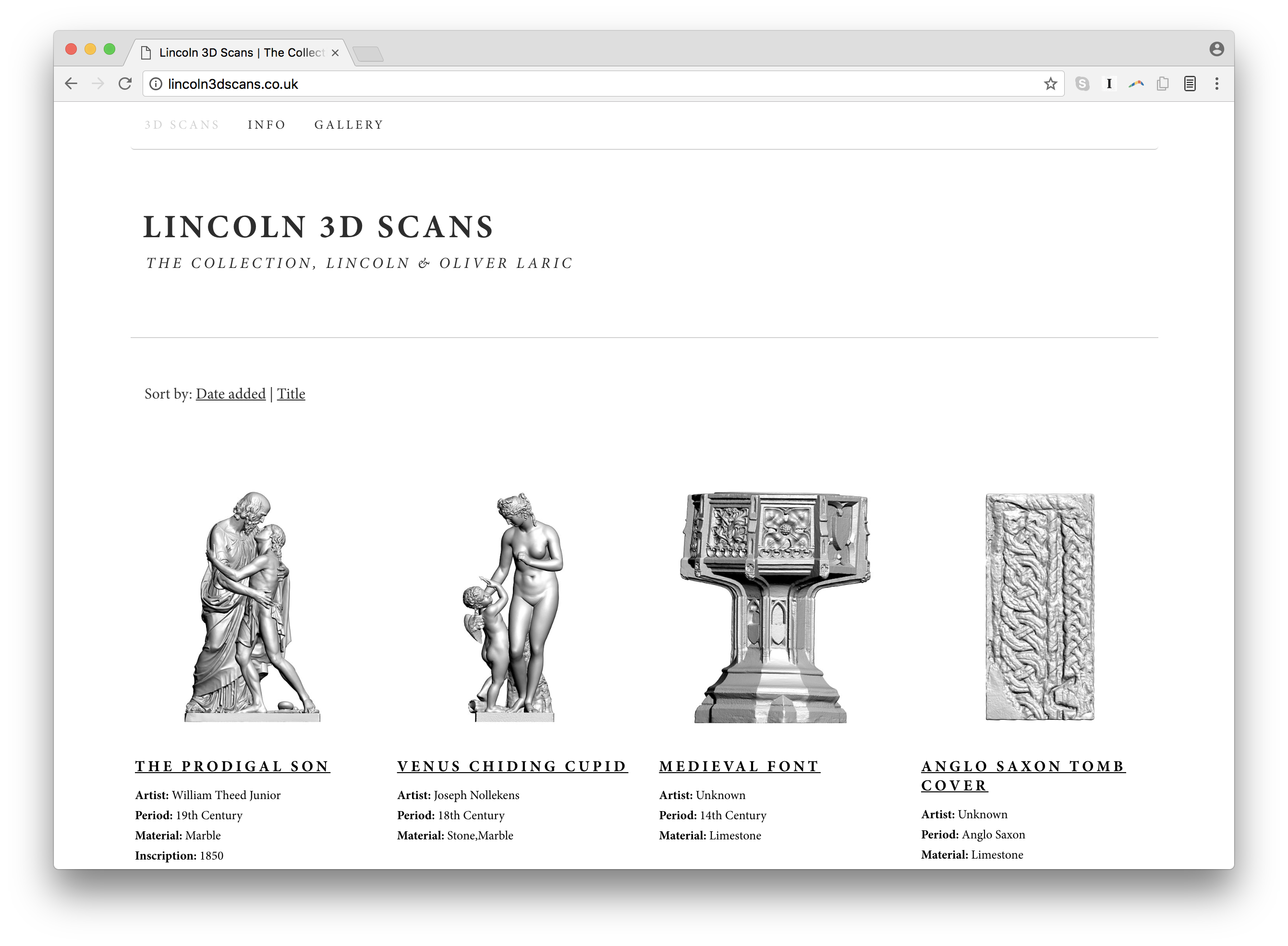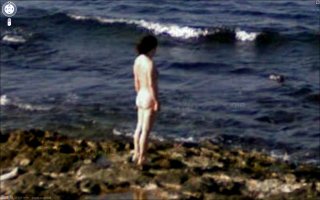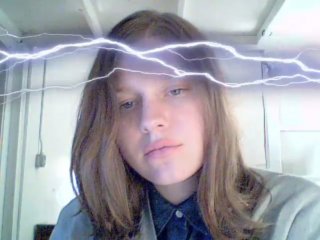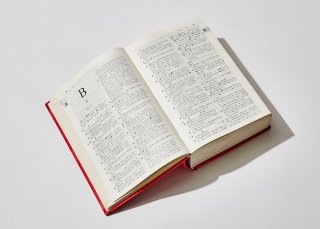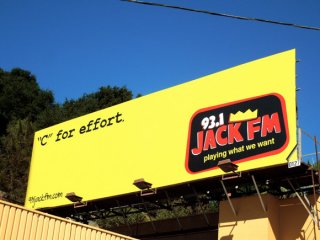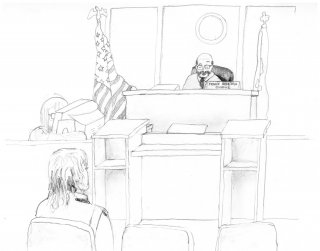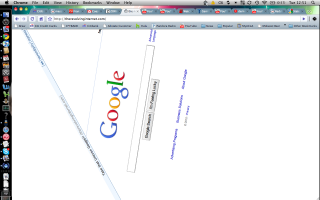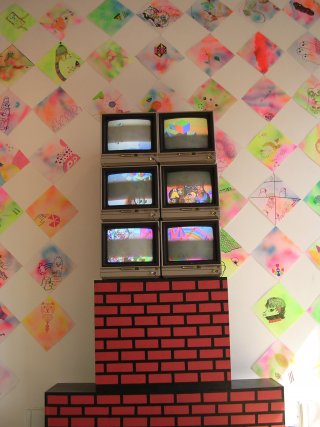Versions
Oliver Laric
2010
Oliver Laric’s Versions (2010) is a video essay that muses on the manipulation and re-appropriation of images throughout history.
Versions (2010) is the second of three official versions of this essay, and forms part of a larger project that includes “a series of sculptures, airbrushed images of missiles, a talk, a PDF, a song, a novel, a recipe, a play, a dance routine, a feature film and merchandise.” All of these components come together to create a meta-exploration of the topics raised therein: the relationship between copy and original, authorship, piracy, and reuse. Ultimately, Versions is a celebration of visual culture as a collective, social project, historically and in the internet-enabled present.
Versions (2010).
“Same, same, but different.”
From 2009-2012, Laric produced three iterations of the video essay Versions (2009), Versions (2010), and Versions (2012).
The videos all collage original text by Laric with stolen texts from other artists and thinkers, spoken by a feminine computerized voice. Laric pairs this audio track with with images, clips, and icons that jump back and forth across centuries, mixing original source material with Laric’s recreations.
 still from Versions, 2010, video, 9:06 minutes
still from Versions, 2010, video, 9:06 minutes
Versions (2010) steals from the likes of Joseph Koerner, Susan Sontag, and Friedrich Nietzsche, cobbling their words together with Laric’s own interventions and modifications to create a meandering series of observations, which drift in and out of obscurity.
The unauthored text begins by considering the physical destruction of icons and images, but shifts toward an inquiry about this notion of destruction and the sanctity and authorship that must undergird it.
 Oliver Laric, Maria Justitia, 2010, rendered image of 3-D model, dimensions variable.
Oliver Laric, Maria Justitia, 2010, rendered image of 3-D model, dimensions variable.
Read Dean Kissick's essay on Versions
“We are always somehow rereading a classic, because we have encountered some previous incarnation of it, a refraction, in other stories, texts, or versions. What are the many versions if not diverse perspectives of a moveable event, if not a long, experimental assortment of omissions and emphases?”
- Versions (2010)
Laric offers–through the text, but also through a carefully orchestrated succession of found images and clips–that no image, icon, or thing can be singular. Each is haunted by another version of itself, or by something else entirely.
In one moment, Versions offers scenes from animated films side by side, displaying their uncanny similarity. It becomes clear that the two distinct scenes share a skeleton, a moving image sequence that may have been rotoscoped numerous times with with different characters and backgrounds.
 still from Versions, 2010, video, 9:06 minutes
still from Versions, 2010, video, 9:06 minutes
In another, ancient Greek statues appear alongside the Roman statues that copied them, and neoclassical works that copied both. The Roman sculptures were once considered of art historical value only as a way of studying their Greek prototypes, an approach known as Kopienkritik, while ignoring the specificity of the copy.
As with many other components of Versions, Laric continued the idea of celebrating sculptural copies in a range of other artistic gestures. For his 2011 exhibition “Kopienkritik,” he curated a selection of plaster casts from the collection of Kunsthalle Basel.

Oliver Laric, “Kopienkritik” (installation view). Exhibition at Skulpturhalle Basel, 2011. Photo by Karen Archey.
And for his 2013 project Lincoln 3D Scans, Laric made available 3D models of objects from the Usher Gallery and The Collection in Lincoln, UK via a public website. Visitors were encouraged to download this data, and upload their own iterations.
Quoting Foucault, Versions suggests that “There is more work in interpreting interpretations than in interpreting things.” By positioning copying as a form of interpretation, Laric makes the point that it is a particularly significant cultural form.
“Five people interpret an action, and each interpretation is different because, in the telling and the retelling, the people reveal not the action but themselves.”
Versions is one of several important works of the late 2000s that picks up on a line of inquiry previously explored in Seth Price’s Dispersion, articulating new shifts in the production and circulation of images.
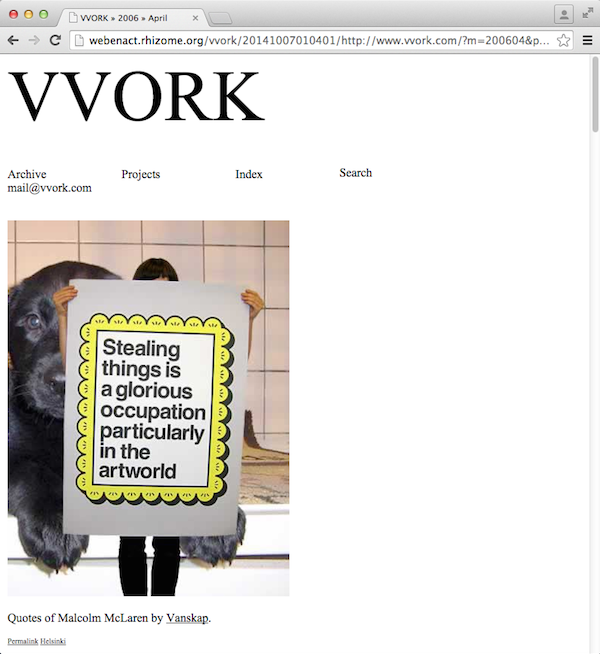
The work also builds on Laric’s work as a co-founder of the art blog VVORK, which became influential by posting documentation of artworks with very brief captions, and no further context. VVORK celebrated similarities among works by artists working in disparate times and places, and consistently argued that online documentation was a legitimate way of experiencing art.
View VVORK, archived by Rhizome
Versions continues this celebration of the copy, and of the idea that artistic creation rests as much on circulation and exchange as it does on individual genius. Singularly, it historicizes the manipulation and appropriation of images, showing that these phenomena are not new. Rather, they have always been a part of the lives of images.
“The more images, mediations, intermediaries, icons are multiplied and overtly fabricated, explicitly and publicly constructed, the more respect I have for their capacities to welcome, to gather, to recollect meaning, and sanctity.”
- Versions, 2010
 Transborder Immigrant Tool
Electronic Disturbance Theater 2.0/b.a.n.g. lab (Micha Cárdenas, Amy Sara Carroll, Ricardo Dominguez, Elle Mehrmand, and Brett Stalbaum)
2007
- ongoing
Transborder Immigrant Tool
Electronic Disturbance Theater 2.0/b.a.n.g. lab (Micha Cárdenas, Amy Sara Carroll, Ricardo Dominguez, Elle Mehrmand, and Brett Stalbaum)
2007
- ongoing
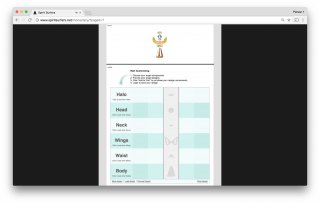 Spirit Surfers
Kevin Bewersdorf, Paul Slocum, Marcin Ramocki, Ethan Hayes-Chute, John Transue, Luke Murphy, Krist Wood, Aron Namenwirth, Harm van den Dorpel, Dragan Espenschied, Travis Hallenbeck, Olia Lialina, Peter Wilson, Patrick Armstrong, Patrick Groth, Peter Blasser, Chad Hopper, Rachel Abelson, Petra Cortright
2008
- ongoing
Spirit Surfers
Kevin Bewersdorf, Paul Slocum, Marcin Ramocki, Ethan Hayes-Chute, John Transue, Luke Murphy, Krist Wood, Aron Namenwirth, Harm van den Dorpel, Dragan Espenschied, Travis Hallenbeck, Olia Lialina, Peter Wilson, Patrick Armstrong, Patrick Groth, Peter Blasser, Chad Hopper, Rachel Abelson, Petra Cortright
2008
- ongoing
